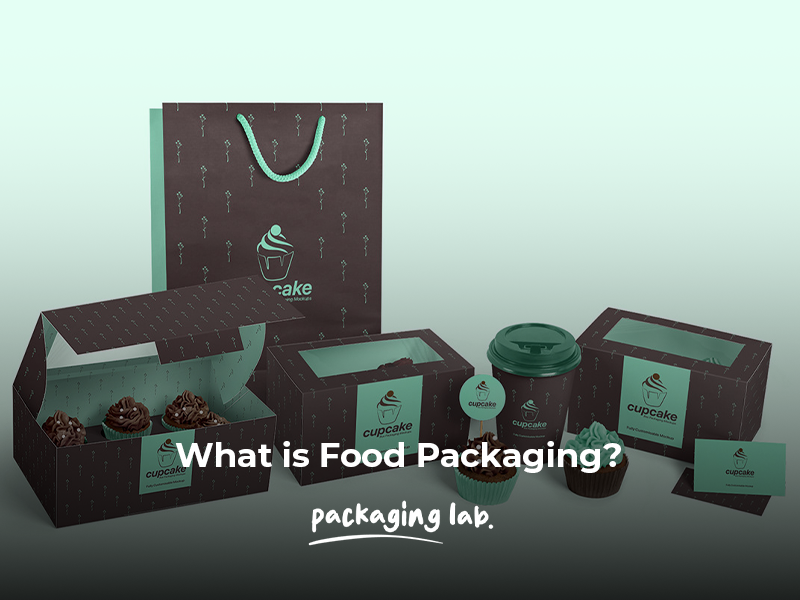
What is Food Packaging? Insights from Packaging Lab
What is Food Packaging?
Food packaging is the foundation of modern food distribution. It ensures that food remains safe, fresh, and appealing from the point of production to consumption. In both retail and food service, food packaging not only protects but also communicates—conveying brand identity, nutritional information, and consumer instructions.
From artisanal bakeries to large-scale manufacturing, choosing the right food packaging impacts everything from shelf life to consumer perception. Whether it's eco-conscious materials, smart portioning, or premium branding, food packaging is where quality meets practicality.
Our range includes everything from Hot Food Boxes to Caffe Drinks Cups, each tailored to meet unique service and sustainability needs.
What is the Meaning of Food Packaging?
The meaning of food packaging goes far beyond containers. It represents a structured, strategic approach to handling and presenting food. It encompasses protection against contamination, temperature control, moisture regulation, and physical integrity.
In essence, food packaging enables efficient distribution while enhancing safety and user experience. Whether you're sending out gourmet desserts in our Dessert Box or supplying grab-and-go meals in compostable containers, the underlying goal remains the same: protect and impress.
What is the Definition of Packaged Food?
Packaged food is any edible item enclosed in a wrapper, box, or container to shield it from damage and spoilage. The definition covers everything from fresh salads in eco friendly food packaging to shelf-stable snacks in food packaging boxes.
Packaging transforms raw or prepared food into a product that is portable, marketable, and traceable. The role of food packaging companies is to ensure that this process aligns with industry standards, consumer trends, and environmental responsibilities.
What are the Three Types of Food Packaging?
There are three main types of food packaging:
-
Primary Packaging
This comes in direct contact with the food. Think vacuum-sealed pouches, wrappers, and customized food packaging for individual items.
-
Secondary Packaging
This groups individual items together, such as food boxes and packaging used to transport takeout orders.
-
Tertiary Packaging
Used for bulk handling and logistics, such as pallets and shrink wrap.
Each layer plays a role in preserving the food and delivering it efficiently and safely to the end user. A seamless combination of all three ensures optimal packaging food practices.
What is the Difference Between Food Packaging and Food Packing?
Though they sound similar, food packaging and food packing serve different functions. Food packaging refers to the design, materials, and function of the containers used. It encompasses branding, labeling, and sustainability.
Food packing, on the other hand, is the physical process of enclosing food in those containers. It’s a logistical step. While food packing is mechanical or manual labor, food packaging involves thoughtful design and purpose-driven material selection.
Choosing the right food packaging solutions means not only focusing on efficiency in packing but also ensuring the packaging aligns with brand and safety standards.
What is the Most Common Food Packaging?
The most common types of food packaging include paper-based containers, plastic wraps, metal cans, and glass jars. However, the rise of sustainable food packaging has shifted the landscape. Paper bags, compostable food packaging, and environmentally friendly food packaging options are becoming increasingly popular.
Among our offerings, Paper Bags remain a top choice for their versatility, printability, and eco-conscious appeal. Ideal for both small eateries and high-volume chains, they embody both function and minimalism.
Which is Best for Food Packaging?
The best choice for food packaging depends on the nature of the food, its required shelf life, and the brand’s values. For instance, warm dishes benefit from insulated solutions like our Hot Food Boxes, while desserts shine in custom-printed cartons.
For brands focused on sustainability, options like eco friendly food packaging and compostable food packaging are crucial. When aesthetics matter just as much as functionality, custom food packaging and food packaging design allow businesses to reflect their identity clearly.
The ideal approach involves a mix of durability, clarity, and branding power—because food packaging isn’t just about safety, it’s about story.
From small-scale cafés to national franchises, the question is no longer just how to transport food, but how to present it. Whether you're creating curated food care packages or sourcing high-quality food packaging supplies, choosing the right food custom packaging can define your customer’s entire experience.
For foundational tools, explore our Essential collection—carefully selected to support consistent, quality service at any scale. In the evolving world of food packaging, smart choices build trust, shape taste, and support the future of food.







